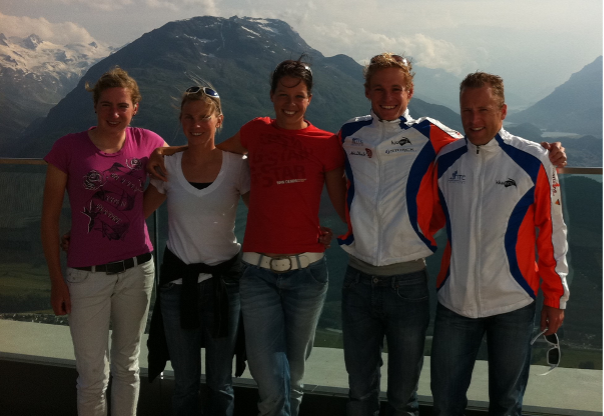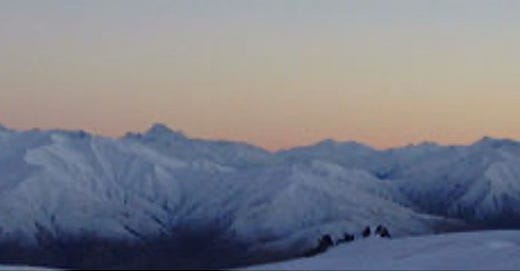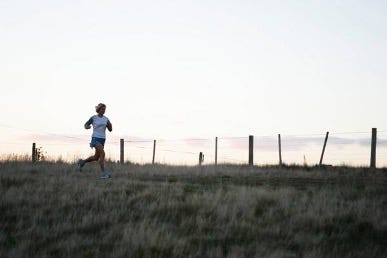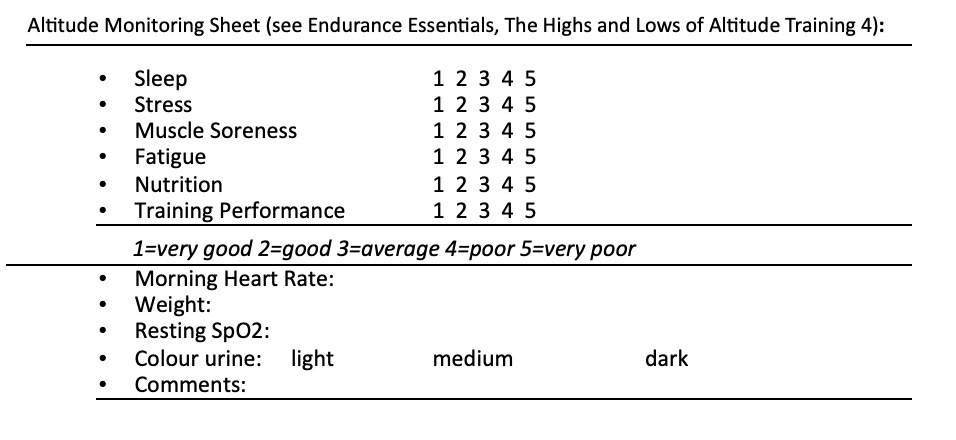For prior articles in this series, please click HERE.
In this article, we will cover:
Live High-Train Low
Live Low-Train High
Live High-Train High & Low
Live Very High-Train High
Responders vs Non-Responders
In 1997, esteemed altitude training researchers Benjamin Levine and Jim Stray-Gundersen published a landmark research paper in the Journal of Applied Physiology. The term landmark paper is reserved for research that substantially changes our practice or provides the missing evidence to support current practices. The paper was titled ‘Living high-training low’: effect of moderate-altitude acclimatisation with low-altitude training on performance.
With the outcome of their research data, they challenged the then-common practice of altitude training, which was to go to altitude and live and train there for a period of time. They suspected that the fact that altitude training did not seem to work for everyone and could even result in detrimental performance effects for some was directly related to an inability by many athletes to train at a similar intensity and velocity compared to sea level. They postulated that combining the physiological effects of exposing athletes to altitude air with optimal training at lower altitudes would have superior outcomes. The results of their research were interesting but, for most of us coaches, not mind-blowing. We had already worked out that optimisation of training is just as important as exposure to altitude air and that getting the combination right is the key to a successful altitude campaign. The idea to achieve this by letting athletes live high and train low was clever and confirmed our postulation. ‘The coach knows what works; it is the scientist's job to tell us why’, said renowned running coach Arthur Lydiard. It is no different for altitude training….
Research Summary
Levine and Stray-Gundersen divided 41 decent runners (females had to run 5 km sub-18.30 min and males sub-16.30) into three groups; one group lived and trained at sea level (SL), the second group lived at a moderate altitude of 2500 meters and trained at the lower altitude of 1200-1500 meters (MA-LA) while the third group lived and trained at the moderate altitude of 2500 meters (MA). The training was periodised and controlled for the three groups; allowance was made for the MA group as they could not replicate sea-level training intensities. The MA-LA group was able to train similarly to the sea level group. The groups underwent a battery of tests before and after the training camps, of which the most important were VO2 max (treadmill), a 5 km time trial and blood tests. They found an improvement in 5000-meter tt by 13 seconds in the MA-LA group but not in the live high/train high group or the sea level group. VO2 max had improved markedly in both altitude groups by 5%, and the blood tests also indicated an increase in red blood cell production in the two altitude groups. The moderately high training occurred in Deer Valley, Utah (2500 meters). Low-altitude training was conducted in Salt Lake City, a 30-minute drive away (1250 meters). The sea level camp was held in San Diego.
Of note is that for the MA-LA group, the training was still done at altitude. Although the researchers called it low altitude, 1200-1500 meters above sea level is still significant, especially when exercising.
Air is less dense at altitude due to a lower barometric pressure of the atmosphere. This means that oxygen molecules are spread further apart, lowering each breath's oxygen content. Although air contains 20.9% oxygen at all altitudes, it feels like there is a lower percentage of oxygen. This is called the effective oxygen concentration (which is calculated from the barometric pressure). The effective oxygen concentration in the air is 20.9% at sea level. It drops to 17% at 1500 meters and 15% at 2400 meters.
In my experience, an altitude between 1500 and 2000 meters gives athletes the best of both worlds: exposure to altitude air while maintaining the ability to still train similarly to sea level intensities after an initial acclimatisation period.
Live High-Train Low
The model introduced by Levine and Stray-Gundersen became generally known as the Live High-Train Low model. Subsequent studies confirmed the observations made by Levine and Stray-Gundersen. It also generated discussions on alternative combinations of altitude and training. This was the nineties, the time that different methods of altitude simulation became popular in the Western world. Altitude simulation allowed researchers to play with different combinations for altitude training and living from the comforts of their own Universities. What would happen if you lived high and did most of your easier training high and the key, high-intensity sessions low? And what about turning things around by living and training at sea level but doing harder training sessions at (artificial) altitude a few times per week? Could that work? A whole body of research followed, and all of these methods have a benefit. In 2009 Bonetti and Hopkins published a summary (meta-analysis) of all the research done till then. They concluded that all methods of hypoxic exposure were effective, even if the live high-train low method still came out on top, with the conventional live high-train high method not far behind. The results of the different methods of altitude simulation were less marked but still positive. They also noted that the differences in individual response rates to altitude make interpreting the results more challenging. When you take the ‘poor responders’ and ‘non-responders’ out of the equation, the proof of the benefits of altitude training is overwhelming.
Live High-Train High & Low
In the meantime, coaches and athletes in the main continued with the natural altitude training camps. They would access lower altitudes for key sessions (LH-TH-TL) where practical. The LH-TL model, promoted by Levine and Stray-Gundersen, was not practical due to the travel logistics (boredom, travel sickness, interference with the training and recovery process), but living high, training high and doing some critical sessions at a lower altitude has become more common and this has turned out to be an effective practical solution. My own experience includes stints at Flagstaff (2100 meters), with Sedona (1300 meters) as the lower altitude alternative, the Snowfarm in New Zealand (1500 meters), with Wanaka (300 meters) as the main training ground and Font Romeu in France (1800 meters), with the plateau at Les Angles (1600 meters) at a slightly lower altitude. During a training camp with the Dutch Olympic team in 2011 at St Moritz (1800 meters), Swiss Dutchman Jan van Berkel slept high up the mountain at 2400 meters, accessible only by cable car. During the day, he joined the rest of the team in St. Moritz to train. He was used to altitude; the other, younger team members were not, so it would have been too risky to do the same for them. I have learned that the key is to try to fit the altitude with the athlete's ability to train and recover, thereby individualising not only the training but also the altitude.
When in Flagstaff, the more resilient athletes lived and mainly trained there, while the more altitude-sensitive and less experienced athletes lived and trained in Sedona. The Flagstaff athletes came to Sedona twice per week to do a couple of key sessions. For most athletes, the ‘live high, train high and do some training low’ model seems to work well and can currently be considered ‘best practice’ for natural altitude training.

Responders vs Non-Responders
Unfortunately, no specific tests exist to distinguish between responders and non or slow-responders to altitude training. Some key indicators can help us identify who may benefit from altitude training and who may respond less effectively.
Performance Improvement: One of the most straightforward and obvious ways to distinguish responders from non-responders is to measure performance improvements after a stint of altitude training. If an athlete experiences a significant increase in performance following altitude training, they can be considered responders. Regarding the ‘non-responders’: Review their training, subjective perception, heart rate, and other data gathered before labelling an athlete as a non-responder when they don’t do so well. Is there anything which can explain their poor response? Have they been unwell? Is there a suggestion that they trained harder than what was recommended? Or even that there was one specific training session where they dug themselves a hole (not uncommon)? What is/was their iron status? What was their nutrition like? Any weight loss? Etc. You will probably find some indication towards the possible cause of the athlete’s questionable response to altitude. In that case, try again or try a different altitude or method of altitude training. Perhaps all athletes are responders when you find the right formula for individual athletes.
Physiological Testing: Conducting physiological tests before and after altitude training can provide valuable insights. Monitoring factors such as changes in red blood cell count, haemoglobin levels, VO2 max, and muscle oxygen uptake can help identify individuals likely to be responders. A common observation by researchers regarding ‘non-responders’ is that they train poorly at altitude, their VO2 max does not improve, and they have a weak or no E.P.O. and red blood cell response
Genetics: Genetic testing can provide information about an athlete's genetic predisposition to altitude adaptation and response. The current research in this area is promising but still in its infancy. An altitude gene named Hypoxia Inducible Factor (HIF) was identified in the early 2000’s. It is a gene which controls and regulates oxygen transport and processing mechanisms in conjunction with other related genes. It is beyond the scope of this article to go into this further except to say that this area of research might well hold the secret for predicting how an athlete (or mountaineer) responds to altitude.
Training History: Athletes with a strong training history and a high baseline fitness level may be more likely to respond positively to altitude training. Those with less training experience or lower fitness levels may respond less effectively.
Individual Monitoring: Continuous monitoring of an athlete's progress during altitude training is essential. Regular assessments of performance, physiological markers, and subjective feedback from the athlete can help determine if they are responding positively.
Altitude Profile: The altitude and time of exposure, including just living or training at altitude, will impact individual responses. Trial and error and lots of monitoring will assist in sifting through the different methods of combining different altitudes and training and which is best for the individual athlete.
Hypoxic Tolerance Testing: In 2012, the French researcher Jean-Paul Richalet introduced the Hypoxic Tolerance Test to predict susceptibility to altitude sickness and, thereby, indirectly, the athletes' response to altitude training. The test exposes athletes during an exercise test to increasing levels of hypoxia while monitoring ventilatory (breathing), cardiac (heart rate) and SpO2 response. An increase in ventilation and heart rate combined with maintenance of SpO2 suggests resistance to AMS and thereby indicates the level of risk to the athletes when travelling to altitude. The hypoxic tolerance test is used more commonly in mountaineering circles, even if studies suggest that athletes might also benefit from the test to predict adaptability to altitude.
There is no one-size-fits-all approach, and one or more of the above indicators will influence individual responses. Therefore, personalised assessment and monitoring are crucial to determining whether an athlete is a responder, non, or slow-responder to altitude training. Working with sports scientists, coaches, and medical professionals experienced in altitude training can help optimise each athlete's exposure to altitude training.
Further Reading:
Levine, B.D., & Stray-Gundersen, J. (1997). Living high-training low: effect of moderate-altitude acclimatization with low-altitude training on performance. Journal of Applied Physiology. 83:102-112
Bonetti, Hopkins: Sea-Level Exercise Performance Following Adaptation to Hypoxia, A Meta-Analysis, Sports Med 2009: 39 (2): 107-127
In the next installment of this series, all will be revealed about altitude simulation.
Breath Holding
Altitude Tents
Intermittent Hypoxic Exposure
Intermittent Hypoxic Training
Protocols








